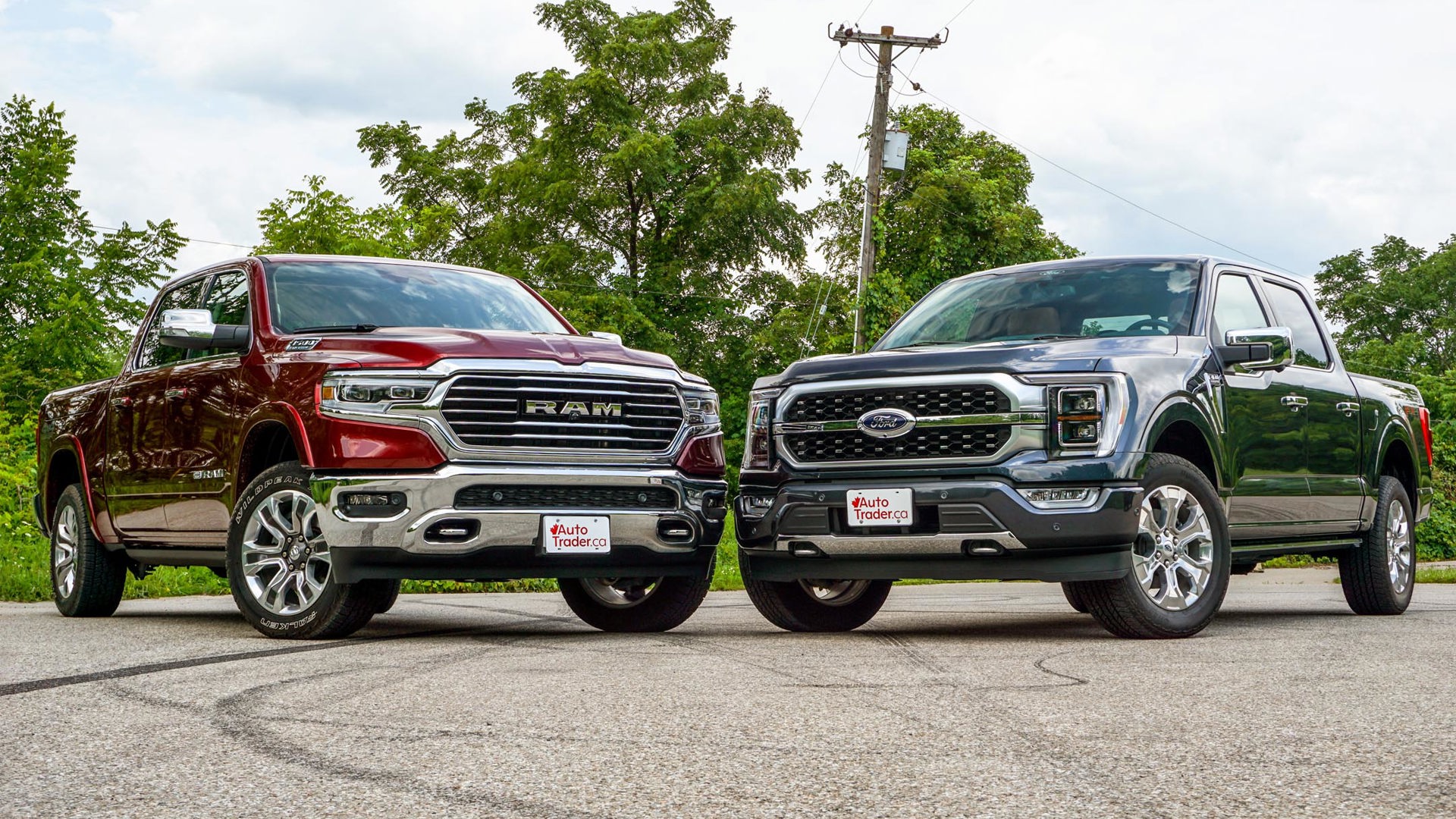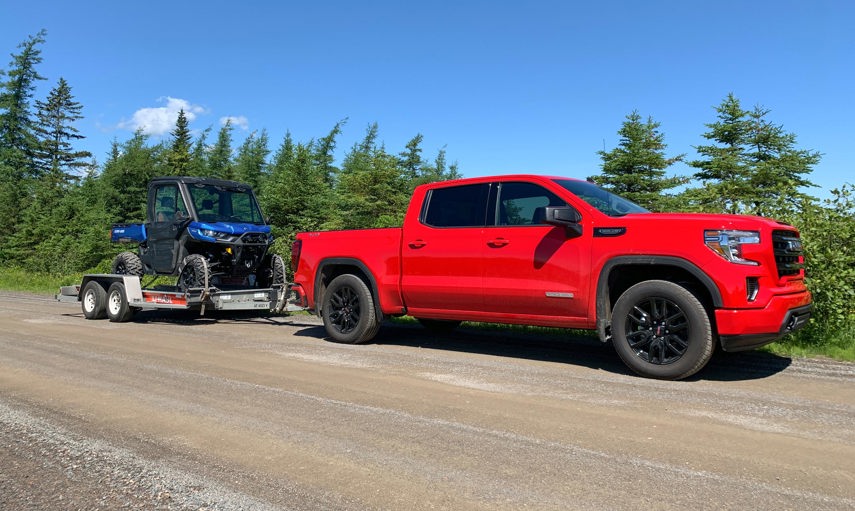Trucks are among the most popular segments in Canada, and some people are buying one as their very first vehicle. But they’re more than just “big cars,” and there’s a lot to know about them. If you’re a first-time truck buyer, we have 12 tips to help you do it right.
What Size Truck Should You Get?
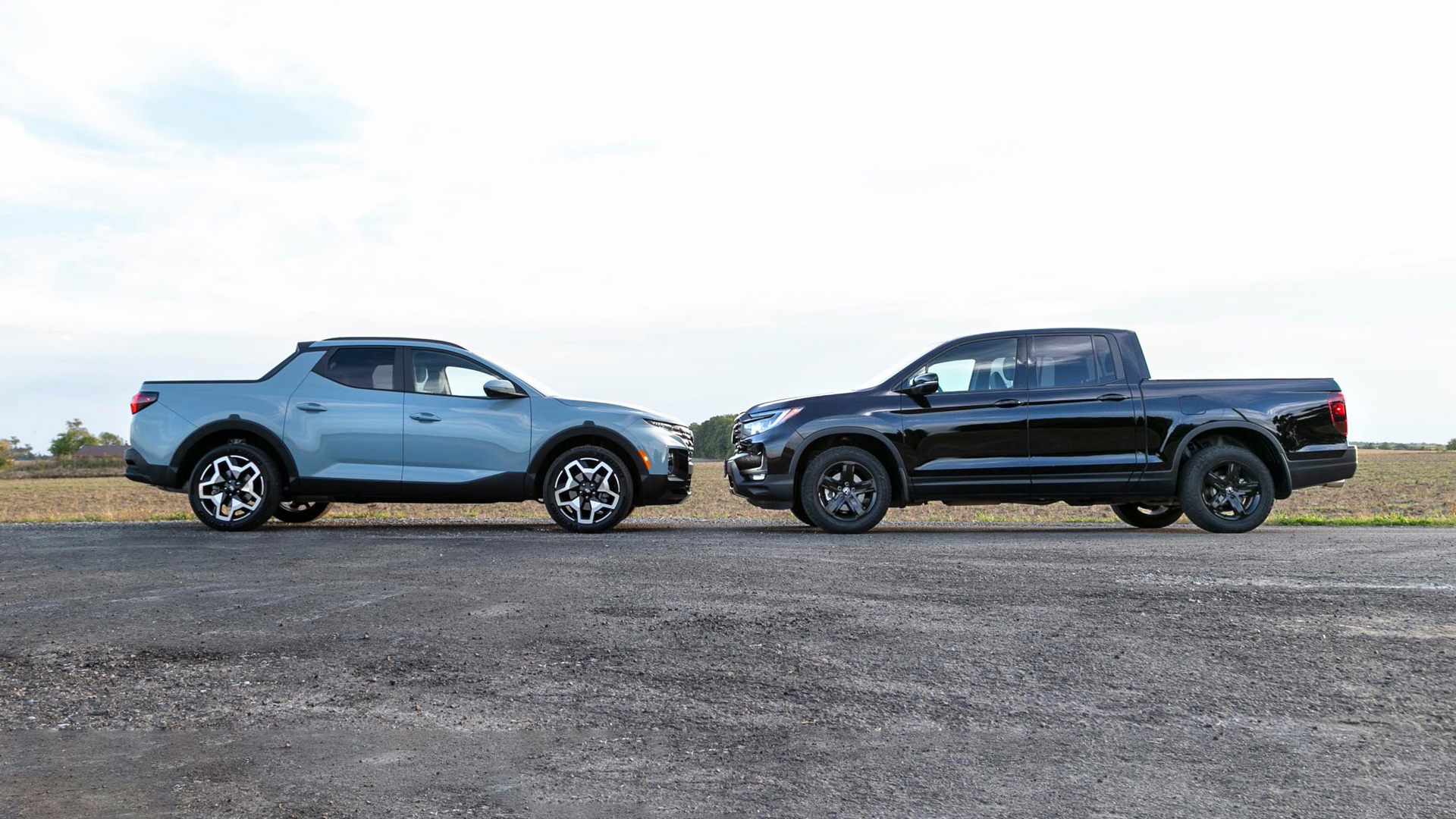
Pickup trucks come in full size (Chevrolet Silverado, Ford F-150, GMC Sierra, Ram 1500, and Toyota Tundra); in midsize (Chevrolet Colorado, Ford Ranger, GMC Canyon, Honda Ridgeline, Nissan Frontier, and Toyota Tacoma); and now also in compact (Ford Maverick and Hyundai Santa Cruz). The full-size Nissan Titan is no longer sold in Canada.
Full-size trucks are the most popular, but be realistic about your needs. They’ve become so big that you must climb up into them, and it can be hard to reach items in the bed. They can be a handful in tight city traffic or parking lots, and yes, it is true that some people have discovered their new trucks won’t fit in their garages. If you don’t need full capacity, at least have a look at the smaller choices.
What “Cab Configuration” Is Best?
The cab is the front of the truck – the passenger compartment. A regular cab has two doors and seats two or three people. It’s the least-popular configuration and isn’t even available on some trucks.
An extended cab can go by proprietary names, such as Nissan’s “King Cab” or Toyota’s “Access Cab”. These usually seat two in the rear seats but it’s a tight fit. Depending on the truck, the back doors may be hinged at the rear, which requires you to open the front doors before you can open or close the rear ones.
A crew cab has four full-size doors, seats up to six people, and is the best choice if you consistently take passengers. Ram also offers a “Mega Cab”, which has more rear legroom and a storage area behind the rear seat.
What About Bed Length?
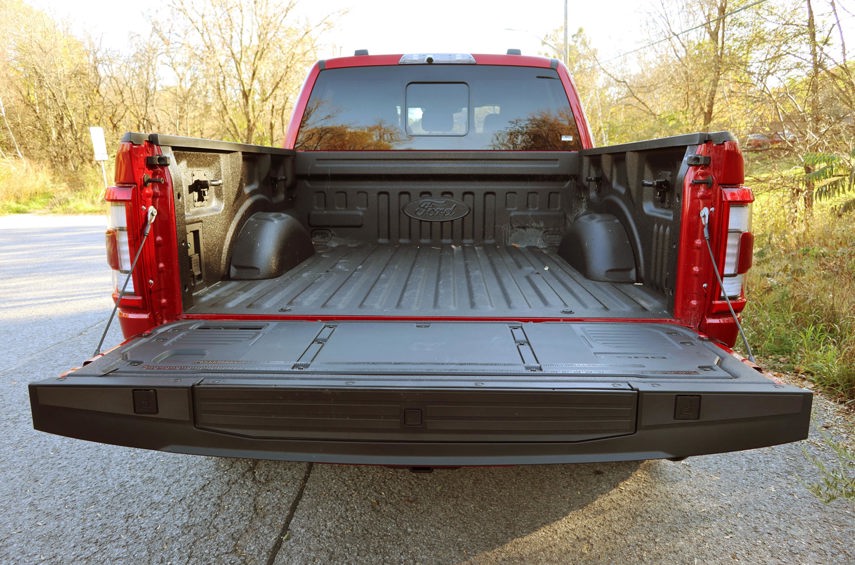
The bed of a truck is measured from the back of the cab to the inside of the tailgate, and even in metric Canada, it’s most commonly expressed in feet. Within a few inches, most bed lengths are eight-foot (known as a long bed); six-foot to six-foot-five (often called a standard bed); and five-foot to five-foot-five (short bed). Compact truck beds can be around four feet.
Long beds are usually found on regular cab trucks, while extended cab and crew cab trucks generally have standard or short beds (some four-door trucks have long beds, but they’re primarily for work-truck fleets). Generally, the more cab you get, the less bed you get, so the truck isn’t too long and unwieldy.
What Do 4x2, 4x4, and AWD Mean?
A 4x2 truck has two-wheel drive (2WD) and drives the rear wheels, while 4x4 is four-wheel drive (4WD) and drives both axles. AWD means all-wheel drive, found on the Ridgeline, Maverick, and Santa Cruz. These AWD systems typically drive the front wheels until more traction is needed, at which time the car will send power to the rear wheels. The truck automates this process entirely.
Not all 4WD systems are created equal. All will have settings for 2WD, and then for 4-High and 4-Low. Those last two are meant for off-road, as driving in those settings on asphalt can potentially damage the driveline. Some trucks further include 4-Auto, which you can drive on pavement; it’s handy for alternating patches of snow and bare road, or in heavy rain. All-wheel drive can be used on all surfaces.
How Do Towing and Payload Numbers Work?
Towing capacity is the maximum the truck can trailer, while payload is the maximum it can carry. Overloading will affect its ability to safely stop and steer.
Don’t go by the numbers advertised on the truck ads. They’re usually for the maximum towing/payload capacity across the entire model lineup, and may not apply to the specific truck you’re considering. Factors such as cab configuration, how many passengers you have, driveline, and options can affect it, and some models may have capacity that’s several hundred pounds less than the advertised numbers. If you’re planning to tow, be sure the truck and trim you’re considering will do the job.
Should You Consider a Diesel Engine?
Depending on the truck, small or large diesel engines are available. On the plus side, they get better fuel economy than a gasoline engine, produce more torque, and they generally have higher resale value.
On the minus side, they can be a very expensive option, their oil changes are pricey, and they require diesel exhaust fluid (DEF), which helps them meet tailpipe emissions standards. They’re really only worth the extra cost if you drive a lot of kilometres to make up the fuel difference, or you need their extra power for towing, so be realistic when you’re considering one.
What’s the Big Deal With Torque, Anyway?
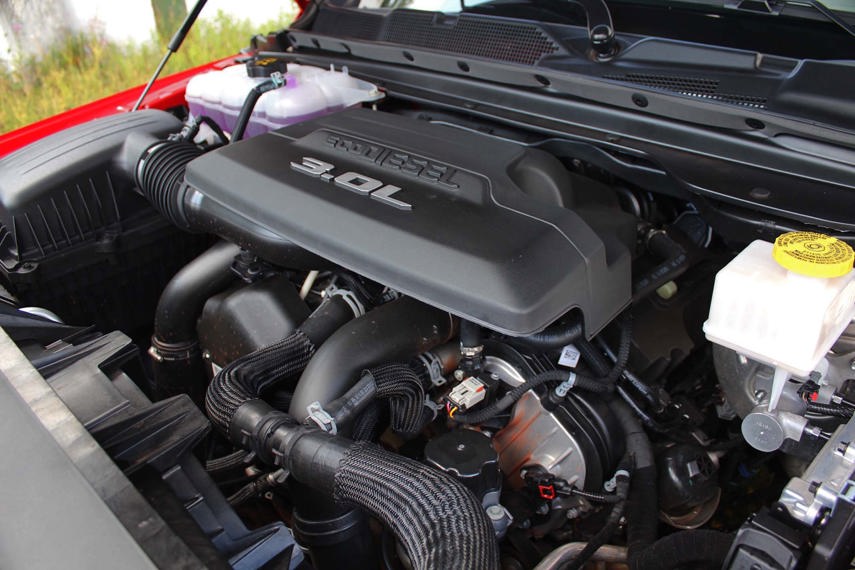
Cars and SUVs are usually advertised by their horsepower, but with most trucks, it’s all about torque. Trucks are primarily about heavier-duty work – even if many don’t actually do any – and torque is the low-speed power that gets the load moving. Diesels generally make more torque and deliver it sooner (at a lower engine speed) than gasoline engines. It won’t be as big a consideration if you’re primarily driving your truck unloaded, but if you’re going to work it, compare torque ratings when you’re cross-shopping.
What About Electrification?
Hybrid and electric powertrains are increasingly showing up on trucks. They’ll save money on fuel, but may cost more to purchase. Not all systems are the same. Ram uses a mild hybrid system that improves fuel economy, called eTorque, but it can’t drive on electricity alone. Hybrid trucks from Ford and Toyota are full hybrids and can drive on the battery alone, although usually not as far as a hybrid car can before the gasoline engine starts up again. Fully electric trucks are coming into the market, with the same pros and cons as electric cars, including cost, range, and recharging.
What Are the Driving Differences Between a Truck and a Car?
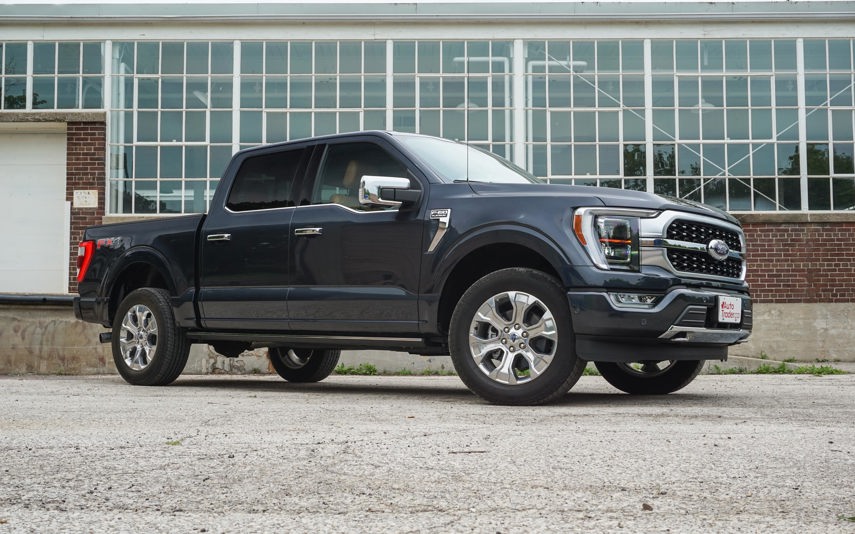
If you’ve never driven a truck before, you need to adapt to it. It’s taller and heavier, and you’ll need to slow down sooner before taking turns. It will take longer to stop, especially if it’s heavily loaded. In a full-size truck, it’s easy to lose sight of small cars or pedestrians, and you need to be even more cautious. Trucks will have wider turning circles than cars or SUVs. If you’re not comfortable with a big truck, shop for a midsize.
What Safety Features Should You Consider?
Most trucks now offer high-tech driver assist technologies, although they may be lacking on the base-trim models. Some to consider are emergency front braking, adaptive cruise control, and blind-spot monitoring, which may include the length of a trailer as well. All trucks have a rearview camera, a requirement on all new vehicles, but some have 360-degree cameras, including a view of the hitch, so you don’t need a helper to guide you when hooking up a trailer.
What Accessories Should You Consider?
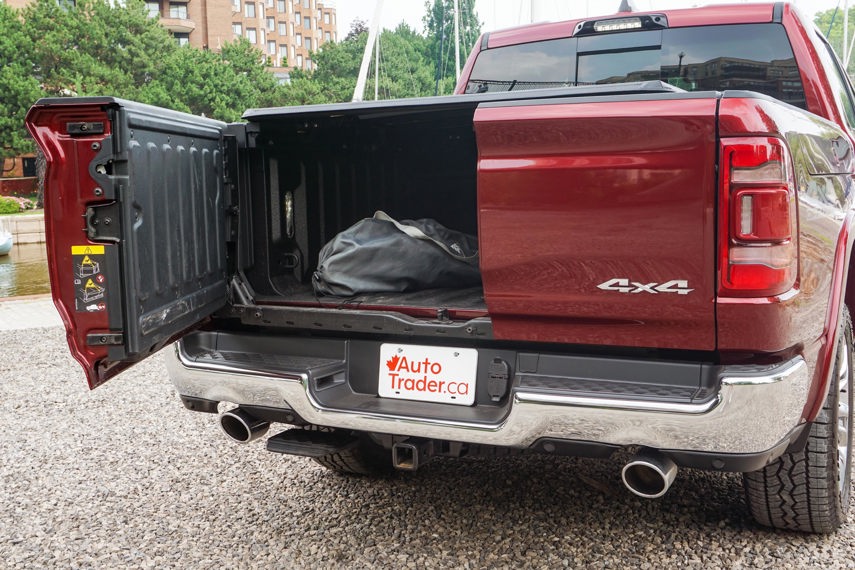
The list of truck accessories is almost endless, both from automakers and aftermarket. Useful ones include a bedliner if your truck doesn’t come with one, either drop-in or spray-in; accessory steps for bed access; and bed extenders, which fold out over the open tailgate if you need extra length for bikes or other cargo.
Some accessories can be useful, but they can also have drawbacks, so consider everything before you sign up. Side steps help you get into the cab, but if you’re going off-roading, they can catch on rocks or other objects. A tonneau cover protects items in the bed, but may get in the way if you’re hauling something big. Larger wheels look good, but their replacement tires can be pricey.
What if You’re Buying Used?
There are pros and cons with any used vehicle, but you need to be especially vigilant with trucks, simply because they’re work vehicles by nature. Towing can take its toll on the driveline, so check the service records to ensure the engine has had regular oil changes, and that the transmission has been serviced at the appropriate intervals.
Have a trusted mechanic check the frame and suspension for any damage from excessive off-roading or overloading, and that it’s not rusted. If it’s a 4x4, drive it in 4-Low and 4-High (off the pavement) to check for noise or binding. And given that trucks generally retain good resale value, be suspicious if the price seems low. It could be disguising expensive problems – and you want your first truck-buying experience to be the best it can be.
